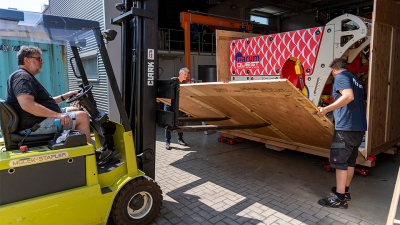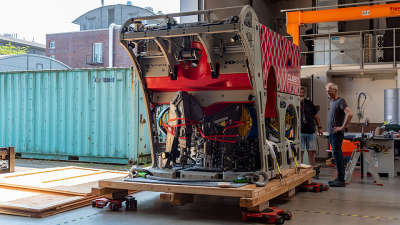- Home
- Discover
- Archive News
- News 2023
- MARUM QUEST5000 arrival
MARUM strengthens deep-sea research with new diving robot
Since last year, it has been clear that the previous ROV MARUM-QUEST 4000, after more than twenty years of operation, will be replaced as part of the proposal for the new research building, the Center for Deep-Sea Research ("Zentrum für Tiefseeforschung", ZFT). Now the new submersible robot from the US company TechnipFMC Schilling Robotics has been delivered. In addition to significantly higher payload capacity and state-of-the-art control technology, the new ROV is equipped with more powerful gripper arms and a hydraulic drive. In the future, for example, it will also be possible to transport observatories to the deep sea and maintain them there. A variety of highly accurate scientific investigations are now possible with the new instrument at depths of up to 5,000 meters. The necessary scientific equipment will be integrated in the coming months.
The new ROV is technically compatible with the existing MARUM-QUEST to a large extent and can therefore continue to use individual components; these will be installed and tested in the coming months. After the conversion and upgrade phase, the new device is expected to be operational for deep-sea research and environmental observation from mid-2024.
The cost of the new diving robot, including the supply cable and winch, is approximately 4.5 million euros and is being provided in equal parts by the federal government and the state of Bremen.
Further information
- Link to MARUM-QUEST page
- Link to announcement of new ROV




